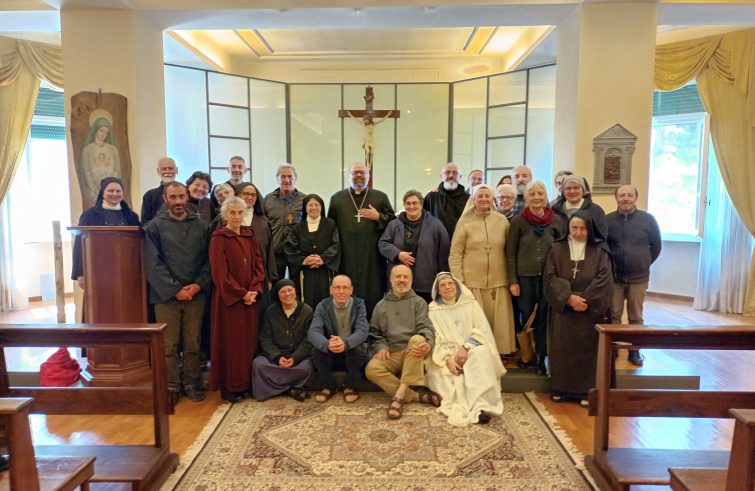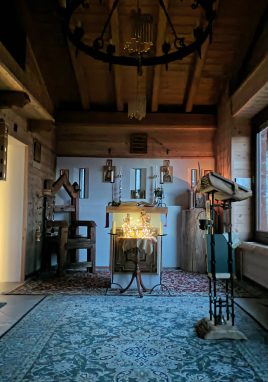
“When people tell me that they are coming here to recharge their batteries, I forewarn them. Even your mobile phone recharges, but it eventually goes back to doing the same things as before. If, on the other hand, a person comes here to unwind and renew themselves, then he or she realises that it’s not about recovering energy but rather about changing one’s life.” Father Raffaele Busnelli, a diocesan priest from Milan, chose the path of eremitism ten years ago. He lives in the ‘Breccia’ hermitage within the territory of the Gallino Alpe hamlet, near the Lecco mountains of Valvarrone. The name of the hermitage evokes a point of contact between those inside and those outside of the system. Fr Raffaele was amongst the key participants in the Synod of Italian Hermits, hosted in Lucca a few days ago to reflect on the Synod of the Church on Synodality with a focus on the Synodal Way of the Italian Church.
Who are the Italian hermits?
There are approximately 200 hermits in Italy. It should be noted that we are talking about hermits, not reclusive persons. While the former choose a life of prayer in the tradition of the Church, the latter are those who decide to live removed from society for other reasons, be they anarchical or ecological beliefs. Underlying eremitism is prayer, a rule, a path of communion with the parish and the local Church.
 At the end of the Synod, as Italian hermits you submitted a letter to the Italian Church that reads, inter alia: “Among us there are those who are called by the Holy Spirit to live the desert in the mountains, in the countryside or in the cities; some live a life of solitude, others share it with their brothers and sisters in small communities; some live in charity, others work.” What do you all have in common?
At the end of the Synod, as Italian hermits you submitted a letter to the Italian Church that reads, inter alia: “Among us there are those who are called by the Holy Spirit to live the desert in the mountains, in the countryside or in the cities; some live a life of solitude, others share it with their brothers and sisters in small communities; some live in charity, others work.” What do you all have in common?
All hermits are diocesan hermits, we are not some abstract or distant entity. Differences exist within us, but we are all live the contemplative dimension of the apostolate. Our distinctive trait is contemplation, but we feel the responsibility of witnessing and transmitting the faith in solitude and in listening
Just like the city at the top of the mount we are visible, and, therefore, we bear the responsibility of our experience.
Moreover, we cherish the transmission of the faith. The people arriving amongst us, with the exception of onlookers, yearn for a journey of faith and prayer. Witnessing and transmitting the faith is the daily work of every parish. We do nothing different.
With a focus on the people of God….
That is part of the tradition. The desert fathers said that when a guest arrives at the hermitage, everything stops: from prayer to fasting. Let all guests who arrive at the monastery be received as Christ, St Benedict said.
When you retreat, the world comes to you. They arrive from the five continents by word of mouth.

Yet based on the figures, this seemingly extreme choice of life is attractive. Vocations to the priesthood are declining, while conversely, the hermit vocation is increasing…
It is indeed a vocation within a vocation. It would be difficult to discern a growth in hermit vocations in the strict sense of the term, since we are speaking of diocesan priests or religious or consecrated laity. Nevertheless, it’s true that we are starting to get to know each other more, to contact each other and gather together.
Within our efficiency-driven societies, there is a tendency to evaluate people based on the extent of what they produce. Following this logic, hermits would be incapable of offering a practical contribution to collective existence. But is this really the case?
Even in the realm of spirituality, we borrow terms from the productive and economic world. In reality, they should not be part of it.
If we were to read the hermit experience through the lens of the economy, it would definitely appear unproductive.
The Lord paves the way in the desert, where apparently there is nothing useful. Novelty blossoms where there are no previous experiences.
Be it in a city or a hermitage?
Cities are not just dumping grounds. In fact, they can be places for encounter. The book of Revelation ends with the new Jerusalem descending out of heaven. The end of the world brings forth not a hermitage, but the city. The most significant place of God’s revelation is not the hermitage, but the city where humanity lives.










